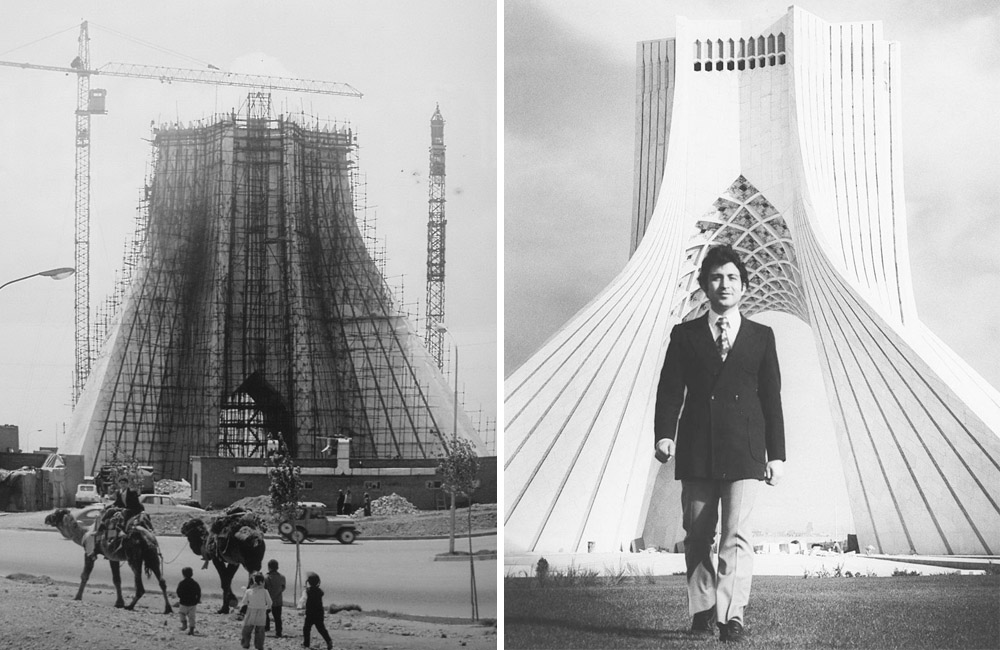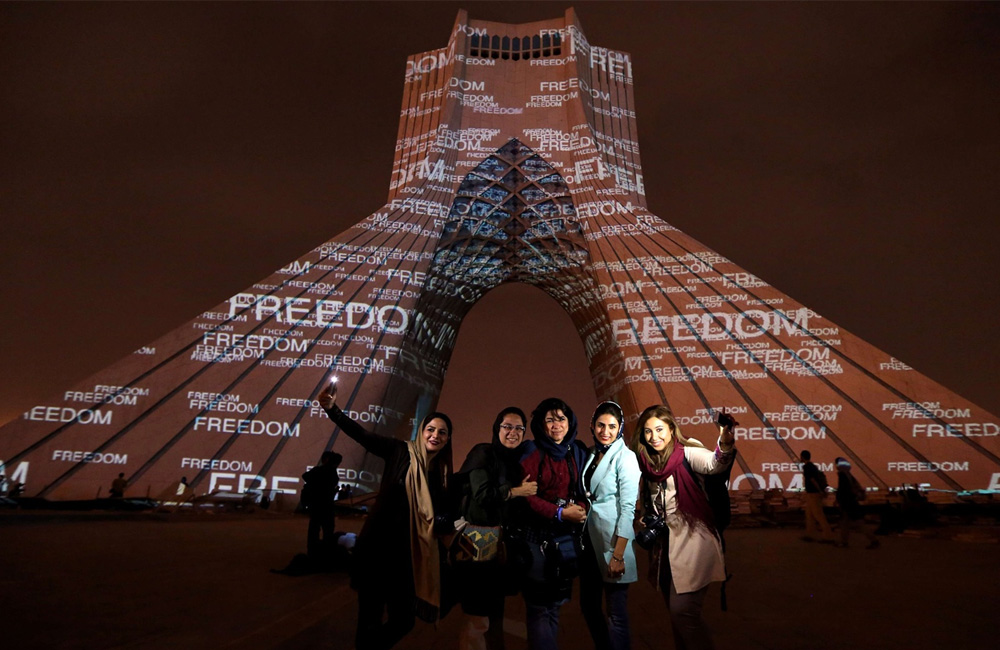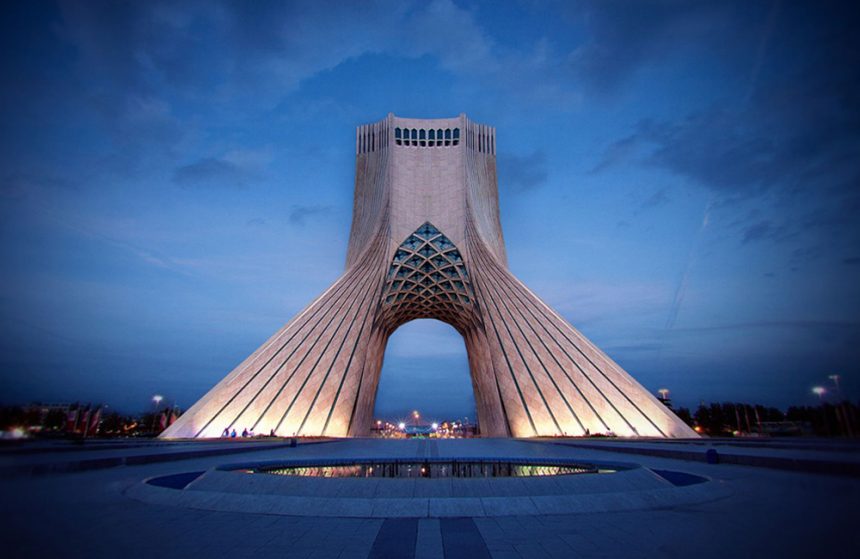A peerless masterwork of contemporary architecture, Azadi Tower is presenting patterns and shapes of ancient Iranian architecture, no wonder it always remains as the original symbol of Iran`s capital, Tehran. Being the biggest square of Tehran, Azadi Tower has been witnessed many memories and celebrations in the passage of history.
Azadi Tower Short History
As a symbol of modernized Iran and a memorial for 2500 year celebration of Persian Empire, Azadi Tower –formerly known as Shahyad Aryamehr Tower- was designed by young Iranian architect Hossein Amanat in 1971 by request and support of Farah Pahlavi, and constructed in west of Tehran. Shahyad Tower was named as Azadi Tower after the 1979 Islamic revolution.

At the opening ceremony, Mohammad Reza Shah and Farah Pahlavi – last king and queen of Pahlavi Dynasty – were present and unveiled Cyrus Cylinder, the world`s first charter of human rights written by Achaemenid king, Cyrus the Great for the first time.
Azadi Tower Architectural Features According to Tower`s Designer
Azadi Tower, a modernized urban symbol, is a combination of pre-Islamic era architectural features of Sasanid and Achaemenid era arches and vaults, and Islamic architecture elements, making it a magnificent and unique construction. During the design procedure, tremendous attention is paid to constructive details, including the layout of the façade block stones. It is said 46,000 polished and processed blocks of stones is used to finish the façade.
“This building is presenting the brilliant history of Iran, a time in the history when Iran was vanguard in literature, architecture, art, handicraft and various sciences. I decided to exhibit my personal conclusion in Shahyad Tower, to demonstrate the greatness of Iranian culture to foreigners travelling to Iran, and even to Iranian people.

The main vault in the middle of the tower, symbolized the Sasanid monument Taq Kasra, and the upper interrupted arch is inspired by Islamic architecture. Geometric structures filling the space between these arches are inspired by Iranian mosques dome design.
Internal space of the tower includes an upper floor under the main vault, and the other under the dome, both accessible by lift. The upper floor is designed to be an art gallery, and the dome is covered by white concrete. In this dome, Iranian Muqarnas is applied in a new shape, covered by chromatic and turquoise color mosaics.
Application of white concrete in this section and the hall, was a new method in Iran. Azadi Tower contains three floors, four lifts and 286 stairs.” Says Hossein Amanat, the tower`s architect.
Landscape Features of Azadi Tower
Azadi Tower stands in the middle of Azadi Square, the biggest square of Tehran. The shape of the square is oval, and around the square there are roads, some of the paths being underpass. Hexagonal lawn flowerbeds are shaping the landscape of the square.
Hossein Amanat, the architect of the tower says:” landscape patterns and shapes are inspired by Isfahan Sheikh Lotfollah Mosque, only the circular shape of the dome is turned into oval. There are very interesting logarithmic relations found in geometry and measurements of Sheikh Lotfollah mosque dome, presenting the deep mathematical knowledge of Iranian architects.
Fountains are designed according to Iranian gardens. Steepness of the square is designed accurately and for a certain purpose; height limit of Azadi tower is 45 meter, because it is located next to Mehrabad Airport and couldn’t be any higher. I wanted to induce a feeling of rising while approaching the tower, but it was not possible. Thus the square was designed on a declination site. When you approach the square from the airport direction, you go through a slope and then you rise again while you approach the tower and the circular fountain. The tower landscape is completely flat, the joining point of this flat landscape and the slope square creates very notable bow-shaped lines.
Azadi Square in an area of 50,000 sq.mt is the second largest square of Iran, after Naqsh-e Jahan Square of 89,600 sq.mt area.

Magnitude of Azadi Square, From The Beginning Up to Now
As mentioned before, the opening ceremony of the tower was begun by unveiling of Cyrus the Great charter of human rights, and the tower has stood as the symbol of modernized Iran since then. This tower has witnessed several political conflicts, the most significant incident was 1979 Islamic Revolution which led to changing the name of Shahyad Tower into Azadi Tower.
Recommended Reads | Internet Access in Iran
Recommended Reads | Credit Card in Iran (Tourist Card)
City/Town: Tehran
Address: Azadi Square
Operating days and Hours: Sunday to Thursday: 9am –6pm and Friday: 10am – 6pm


